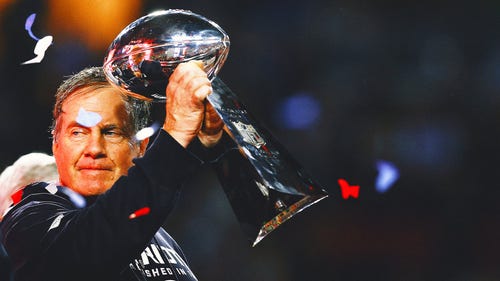
Vote for the greatest Buccaneer
S John Lynch
April 25, 1993, after more than a decade and a half as the NFL's gold standard for futility, the Tampa Bay Buccaneers took the first step toward relevancy in the third round of the NFL draft. Their first three picks of the draft were a typical who's WHO? for the Bucs — legends Eric Curry, Demetrius DuBose and Lamar Thomas. Then came arguably the most significant pick in franchise history: a Stanford safety taken with the 82nd pick. Selecting Lynch was the first of a series of moves that would not only lift the Bucs out of the doldrums, but also create one of the greatest defenses in NFL history and culminate with a blowout victory in Super Bowl XXXVII. Lynch served as a cornerstone and leader of that defense, spending 11 seasons in Tampa Bay and finishing in the franchise's career top five in games started, tackles and interceptions. One of the hardest hitters of his time, Lynch played in nine Pro Bowls in his career and was also a bit of an innovator, being the first player to wear a live microphone in a Super Bowl.
LB Derrick Brooks
Brooks’ place in Central and North Florida history would have already been cemented with work in the community and his alma mater, Florida State. But adding the fact that he’s probably the greatest player in the history of the NFL franchise to his resume may make him governor material. The argument can be made that Brooks is the greatest Buc of all time. Brooks has more than twice as many tackles as any other player in team history, 38 more starts, and is fifth all-time in interceptions. Drafted in the first round of the 1995 draft, Brooks entered the league with Warren Sapp to further cement the foundation of an all-time great defense. Brooks made 11 Pro Bowls and in 2006 became the fifth player in NFL history to earn 10 Pro Bowl trips, be named AP Defensive Player of the Year and win a Super Bowl. Beyond the playing field, Brooks launched numerous charitable ventures, most notable Brooks’ Bunch Charities, Inc., which teaches students skills essential for academic and professional success while exposing them to cultures through travel. He was also appointed to the Florida State Board of Trustees in 2003.
DT Warren Sapp
Sapp’s career got off to a bit of an ignominious start, when reports of a failed drug test prior to the 1995 draft caused his draft stock to drop. The best defensive player in college football, viewed by most as a top-five pick, slipped to 12. But what looked like Sapp's loss turned out to be the Bucs' gain. Sapp's career in Tampa Bay coincided with the Buccaneers' rise, but it was no coincidence. In nine seasons with Tampa Bay, Sapp recorded 77 sacks, second in team history. He added three interceptions, one defensive touchdown (and two more on offense), and 130 starts (seventh-most in team history), and made seven consecutive Pro Bowls from 1997-2003. The 1999 AP Defensive Player of the Year missed only four regular-season games despite playing one of the most grueling positions in football.
RB Warrick Dunn
The Bucs’ dominance of the late 1990s and early 2000s was not solely because of defense. Teaming with fullback Mike Alstott, the diminutive Dunn was the speed in one of the NFL’s best backfields in the late ’90s. He is third on the team’s career rushing yards list and also third all-time in receptions for the Bucs. But Dunn’s impact went beyond the stat sheet. Forced to be the family provider at age 18 after his mother’s murder, Dunn brought his sense of loyalty and duty to the Bucs’ locker room and the Tampa Bay community, becoming a favored son of the community (having played college at Florida State). His greatness both on the field and in the community led him to win the Offensive Rookie of the Year and Walter Payton Man of the Year awards.
DE Lee Roy Selmon
The first great Buccaneer, Selmon was drafted first overall in 1976 — the first pick in Buccaneers history — and was the lone bright spot for an otherwise abysmal franchise. The six-time Pro Bowler was the 1979 Defensive Player of the Year, helping lead the Bucs to within a game of the Super Bowl. The franchise leader in sacks, Selmon was named to the Hall of Fame in 1995 despite a career cut short by a back injury. Selmon was the first player inducted into the Tampa Bay Buccaneers’ Ring of Honor, and his legacy lives on in the city, with a seven-location restaurant chain and a 14-mile toll road named after him.










